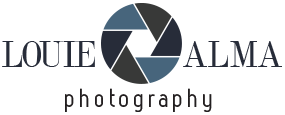What’s the best thing to do with an old, sub-2-megapixel camera? Go out and capture some remarkable images, that’s what.
Can you take good pictures with a 1.2-megapixel camera? Can anyone? Here’s a small album of images shot with a diminutive Sony CyberShot DSC U10 to challenge your preconceptions. The images were all captured 20+ years ago at various locations in the US, Germany and Japan.

About the Camera
If the Sony CyberShot DSC U10 has a superpower, it’s its tiny size. Introduced in 2002, the Sony U10 is small, just 3.3 x 1.1 x 1.6 inches (85 x 29 x 40 mm) and weighs a scant 4.2 ounces (118 g). That makes is scarcely larger than a roll of Lifesavers candy (which measures 2.9 x 0.9 inches).
By all metrics, the Sony DSC U10 is grossly underpowered in today’s world. It has a non-zooming f/2.8 lens (33mm equivalent) and a 1.2-megapixel (effective) 1/2.7 type CCD. Maximum image size is 1280 x 960 pixels. Video capture is MPEG1 and – get this – it records video without audio. Silent movies.

Sony’s CyberShot DSC U10 Owner’s Manual (p. 7) warns users to keep fingers out of the way.
The U10 uses Memory Stick recording media and is powered by a pair of AAA-size NiMH batteries. There is a sliding lens cover and built-in flash on the front, and a 2.5 cm (1-inch) LCD monitor with 293 x 220 dots on the back. Checking focus on a 1-inch monitor is nigh on impossible, unless you use a microscope.
But the point is this: none of the technology matters.
Text continues after this small gallery of images shot with a Sony CyberShot DSC U10.

A side street in Cologne, Germany after dark. Minor post-processing, mainly noise reduction. The halation around the lighting sconces would look entirely different had this image been shot with a 12 or even 6 megapixel camera. Sony CyberShot DSC U10, ISO 320, f/2.8, 1/30 © Jon Sienkiewicz

The Reader, Westchester, NY. For a very early version of a digital image signal processor, the U10’s ASIC handled the dynamic range rather well. Sony CyberShot DSC U10, ISO 100, f/4.5, 1/500 © Jon Sienkiewicz

Stairwell in hotel in Germany. Excellent sharpness from such a tiny lens. B&W conversion in Nik Silver Efex Pro 3. Sony CyberShot DSC U10, ISO 320, f/2.8, 1/30 © Jon Sienkiewicz

My reflection in a traffic mirror in Katano-shi, Osaka Prefecture, Japan, on a gray, rainy day in 2002. Sony CyberShot DSC U10, ISO 100, f/4, 1/60 © Jon Sienkiewicz

Self-service counter displaying tethered cameras at a progressive camera/electronics store in Germany. The hanging sign near the top-center that reads, “Walkmen” revels the age of this photo. Sony CyberShot DSC U10, ISO 100, f/2.8, 1/30 © Jon Sienkiewicz

Atlantic City, USA. Empty lot in 2002. Telephone number pixelated to protect the innocent. Sony CyberShot DSC U10, ISO 100, f/5.6, 1/800 © Jon Sienkiewicz

Trendy, colorful sunglasses in Tokyo. Sony CyberShot DSC U10, ISO 100, f/2.8, 1/80 © Jon Sienkiewicz

Earth-tone wax candles, Soho, NYC, USA. Sony CyberShot DSC U10, ISO 100, f/2.8, 1/30 © Jon Sienkiewicz

Camel rides in Osaka, Japan. Probably not what you expect to find in a typical Japanese tour book. Sony CyberShot DSC U10, ISO 100, f/4, 1/400 © Jon Sienkiewicz

Photographer and photo industry luminary Steve Rosenbaum in Cologne, Germany, 2002, shooting Infrared (IR) with a Minolta DiMAGE 7 and a red filter. Sony CyberShot DSC U10, ISO 100, f/2.8, 1/40 (Note: Steve is the one on the lower left—on the right, that’s Helga, a lady we met on a Kneipentour the night before.) © Jon Sienkiewicz

Sony CyberShot DSC U10 promotional poster near Photokina site in Cologne, Germany. Sony CyberShot DSC U10, ISO 100, f/4, 1/125 © Jon Sienkiewicz
Ready to Challenge Yourself?
Legend has it that two world-class golfers, Lee Trevino and Chi Chi Rodriguez, once competed against each other using only 5 irons. They hit their tee shots with the 5 iron, blasted out of sand traps with the 5 iron and putted with the 5 iron. USGA rules allow up to 14 clubs in the bag, so what were they trying to prove? Fancy clubs don’t make great golf shots, great golfers do.

If you want to try your hand with a Sony CyberShot U-camera, you have a couple choices beyond the U10 used in this story. Sony followed the DSC U10 with the U20, a 2-megapixel version (1/2.7, 6.72mm CCD and same lens, etc.) and later with the U30. The U30 featured a Super HAD (Hole Accumulation Diode) CCD but was still 2-mega. The DSC U40, which was available in four colors, came next, and then the really cool underwater version, the CyberShot U60. Clearly, Sony built a complete lineup based on the small form factor. Looking back, it’s probably a good thing that Sony chose to abbreviate HAD instead of trying to explain what “Hole Accumulation Diode” means.
Challenge yourself with a low-res digital camera, 1.2 preferred but definitely not higher than 2-megapixel. No, you cannot merely set your high-res camera to 1280 x 960 (or similar) because you would still be using the enhanced image signal processing, superior lens and other advanced features.

This image was captured with a Sony DSC U20, an “advanced” 2-megapixel member of the Sony CyberShot U family, in 2003 at Astroland Park, Coney Island, Brooklyn. Sony CyberShot DSC U10, ISO 100, f/5.6, 1/1250 © Jon Sienkiewicz
Yes, you can improve your images with a little post-processing. It’s not cheating when you consider that nowadays all cameras manipulate image files extensively before saving them as JPEGs. In fact, when you inspect the Raw files from some popular cameras, the results are repulsive in comparison to the clean, sharp, colorful JPEGs they spit out.
What’s in YOUR Closet?
Put away your phone and use what you own. We guarantee you’ll have fun.
Data for image of tulips at the top of this story: Sony CyberShot DSC U10, ISO 100, f/2.8, 1/80 © Jon Sienkiewicz
—Jon Sienkiewicz



















